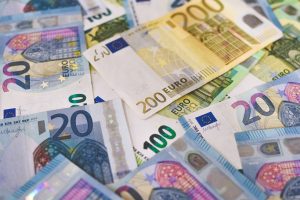Forex trading is a complex and dynamic market that involves different elements, including political and economic factors, which affect the value of currencies. As such, traders use different terminologies to describe their strategies, opinions, and the market conditions. One of the terms commonly used in forex trading is hawkish, which refers to a particular stance or behavior of central banks or policymakers.
In forex trading, hawkish refers to a monetary policy that aims to reduce inflation by increasing interest rates or reducing the money supply. The term hawkish is derived from the bird of prey, the hawk, which represents a vigilant and aggressive stance towards inflation. Therefore, a hawkish stance is associated with a more aggressive and proactive approach to monetary policy.
Central banks or policymakers who adopt a hawkish stance are perceived as being more bullish or optimistic about the economy’s future prospects. They believe that higher interest rates will help to control inflation and prevent it from spiraling out of control, which could lead to an economic downturn. In contrast, a dovish stance is associated with a more passive approach to monetary policy, which involves lower interest rates and increased money supply.
The hawkish stance is often used by central banks or policymakers when the economy is growing rapidly and inflation is high. In this scenario, the central bank may increase interest rates to slow down the economy and prevent prices from rising too quickly. The goal is to control inflation and maintain a stable economy. The hawkish stance can also be adopted when there are concerns about asset bubbles or excessive risk-taking in financial markets.
In forex trading, a hawkish stance by a central bank can have a significant impact on the value of currencies. When a central bank increases interest rates, it makes the currency more attractive to foreign investors, who seek higher returns on their investments. As a result, the demand for the currency increases, and its value appreciates. Conversely, when a central bank adopts a dovish stance and lowers interest rates, it makes the currency less attractive, and its value depreciates.
Traders can use the hawkish/dovish stance of central banks to make informed trading decisions. For example, if a central bank is expected to adopt a hawkish stance, traders may buy the currency in anticipation of higher interest rates and a stronger economy. Similarly, if a central bank is expected to adopt a dovish stance, traders may sell the currency in anticipation of lower interest rates and a weaker economy.
The hawkish/dovish stance of central banks is also important in forex trading because it affects the interest rate differential between currencies. The interest rate differential is the difference between the interest rates of two currencies. Traders can earn a profit by borrowing a currency with a low-interest rate and investing in a currency with a higher interest rate. Therefore, a hawkish stance by one central bank can lead to a higher interest rate differential and increase the attractiveness of a currency.
In conclusion, the term hawkish in forex trading refers to a monetary policy that aims to control inflation by increasing interest rates or reducing the money supply. Central banks or policymakers who adopt a hawkish stance are perceived as being more proactive and bullish about the economy’s future prospects. The hawkish stance can have a significant impact on the value of currencies, and traders can use it to make informed trading decisions. Understanding the hawkish/dovish stance of central banks is crucial for success in forex trading.






